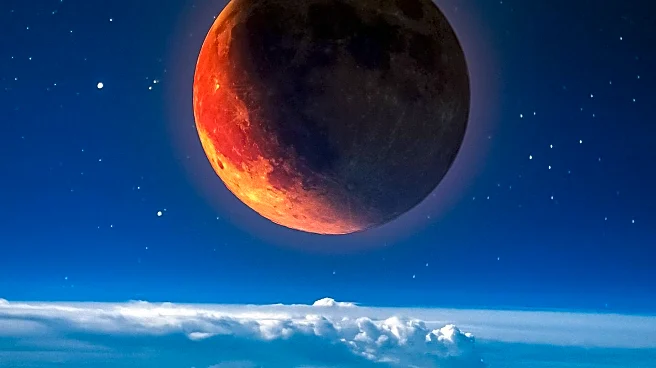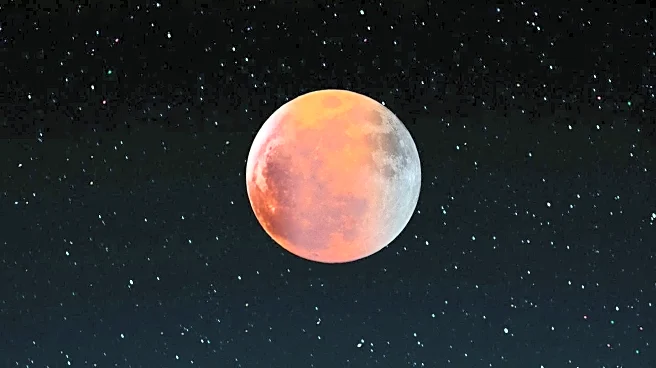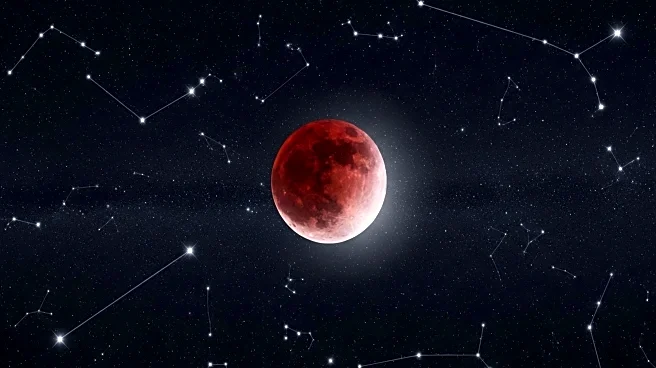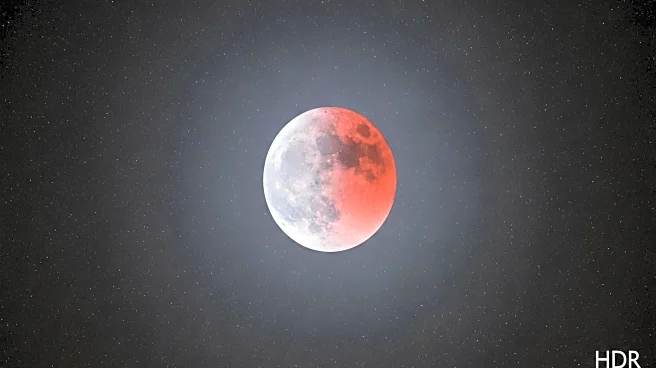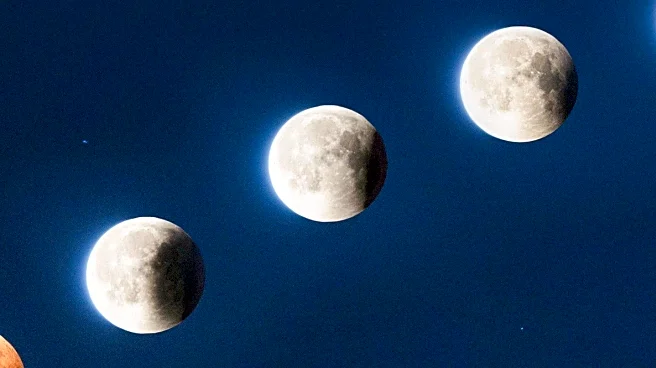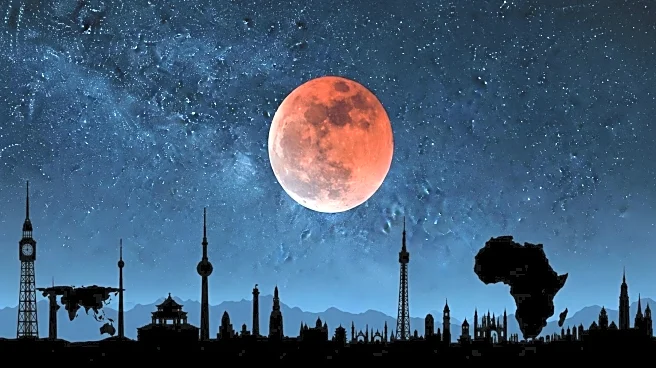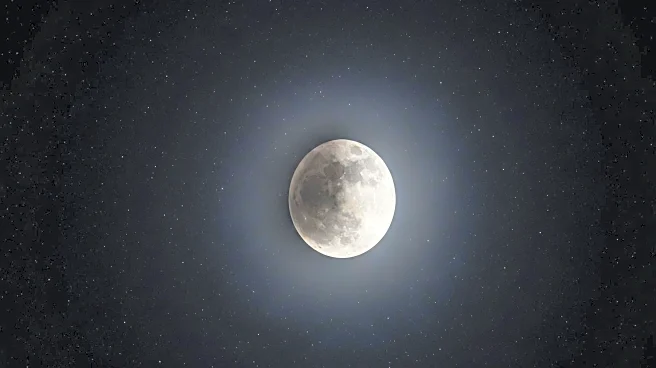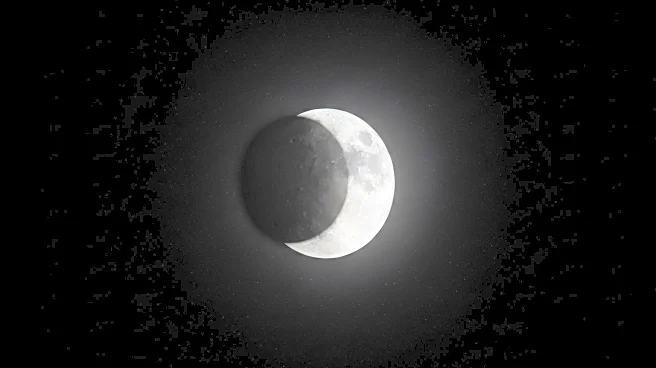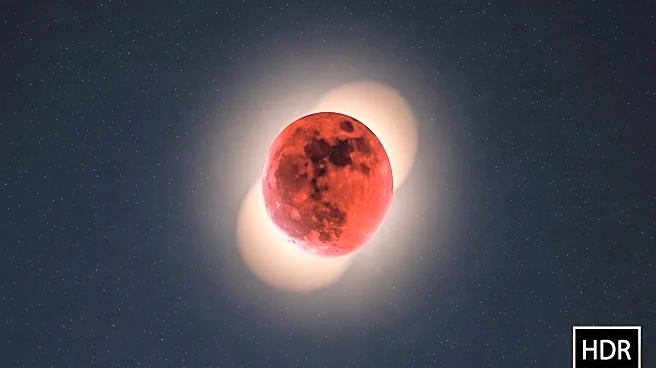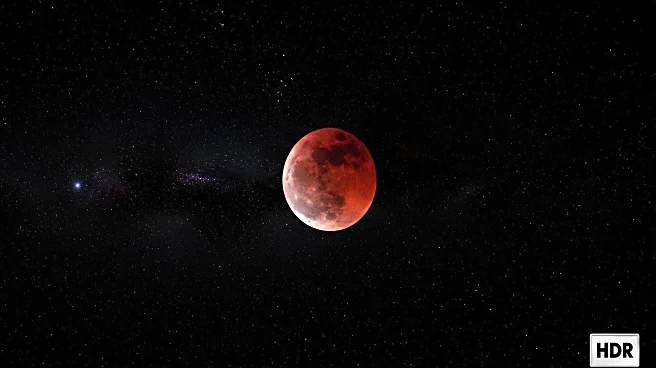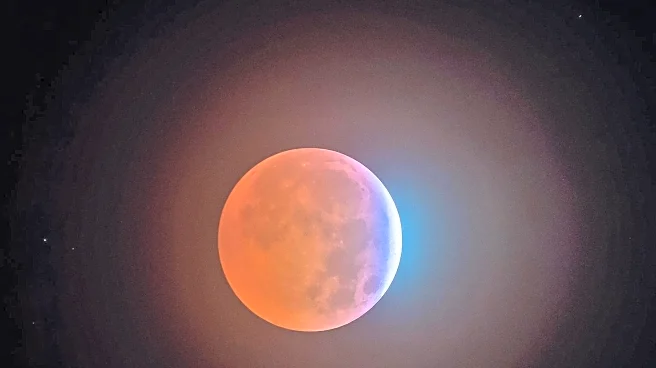What's Happening?
September offers a series of notable astronomical events, including a full lunar eclipse known as a 'blood moon' and a close encounter between Venus and Jupiter. The full moon on September 7, referred to as the Corn Moon, will coincide with a lunar eclipse, giving it a reddish hue visible to billions in Asia and parts of Australia. However, North America will miss this spectacle as the moon will be below the horizon during the eclipse. Additionally, Venus and Jupiter will appear close together in the sky on September 16, accompanied by a crescent moon. The month will also mark the autumnal equinox on September 22, signaling the start of fall in the Northern Hemisphere.
Why It's Important?
These celestial events provide opportunities for stargazers and astronomers to observe and study the dynamics of our solar system. The blood moon, in particular, is a rare occurrence that draws interest from both scientific communities and the general public. Such events can inspire educational activities and increase public interest in astronomy. The alignment of Venus and Jupiter offers a chance to observe planetary movements and their interactions. The autumnal equinox is significant as it marks a change in seasons, affecting weather patterns and daylight hours, which can have broader implications for agriculture and energy consumption.
What's Next?
Stargazers are encouraged to find locations with minimal light pollution to fully appreciate these events. Observatories and planetariums may host special viewing sessions or educational programs to engage the public. The next significant celestial event will be the winter solstice in December, which will further alter daylight patterns. Astronomers will continue to monitor and study these events to enhance understanding of celestial mechanics and their impact on Earth.
Beyond the Headlines
The fascination with celestial events like the blood moon and planetary alignments often extends beyond scientific interest, influencing cultural and astrological interpretations. Historically, such events have been seen as omens or symbols in various cultures. The increasing accessibility of astronomical tools and information allows more people to engage with these phenomena, potentially fostering a greater appreciation for science and the universe.
